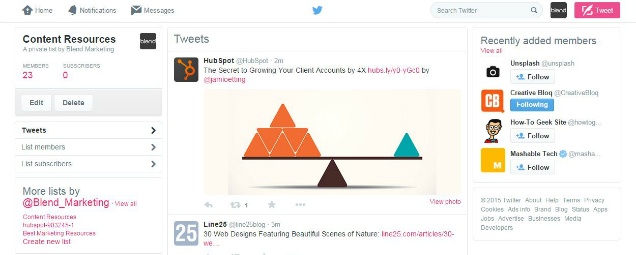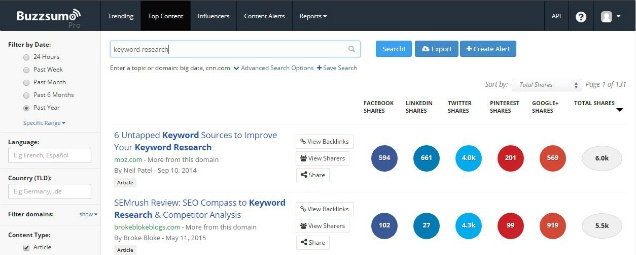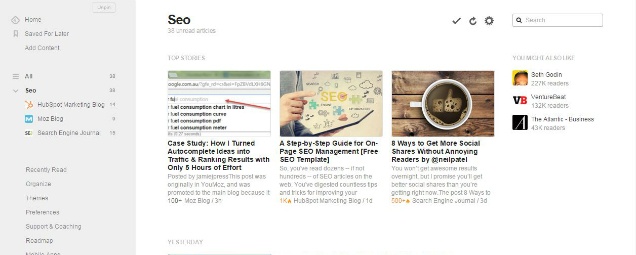As you know, sharing curated content that is of value to your audience is beneficial to your social media marketing efforts and your broader inbound marketing strategy.
Done right, it establishes you as a thought leader in your field and potentially widens your social media reach, supporting your original content creation efforts.The issue is, content discovery can be a time-consuming process, especially when there’s already a virtual pile of jobs stacking up. To streamline the process, here are 5 content discovery tools that help cut through the clutter.
1. Twitter Lists
Scrolling down your twitter stream in search of great content is a serious time-killer. Twitter lists provide a simple, yet effective way of sorting the relevant from the – well… you know what twitter’s like.
Build individual Twitter lists for particular personas you’re targeting, particular topics areas or particular content types. Organisation is key!
2. BuzzSumo
What’s so great about BuzzSumo is that it displays content that is already highly-shareable. Enter a relevant keyword into the search bar, filter by content date and time, and the dashboard provides a list of trending content around the topic, with a breakdown of shares per social media channel. Powerful stuff.
3. Feedly
Feedly can be used as a kind of personalised newspaper. You can add any site that uses RSS to your Feedly, and then view content all from one central dashboard, on desktop or mobile. This tool can be a real time saver if you create go-to collections from your favourite content sources.
4. Scoop.it
Scoop.it scours the web and generates the most relevant content based on keywords you enter. It can be thought of as a social content curation platform, where you can follow other curator’s boards and vice-versa, promoting communal information sharing.
5. Newsletters

Sometimes the oldest ways are the best. Subscribing to great, relevant blogs means the content you’re after goes straight into your inbox (which also serves as a nice content curation reminder!).
I know what you’re thinking – ‘I get enough emails as it is.’ Email management tools are useful for separating the priority emails from the ‘read later’ emails. SaneBox is a big favourite in the Blend office.
Using these tools will aid your content curation, but it’s quality, relevance and originality that will determine the success of your content sharing. Whatever you’re sharing, it needs to be of value to your audience, and rather than lazily reposting content, you need to have something original to say about it.
Without these characteristics, you will not establish thought leadership among your audience, neither will you extend your social media reach through audience sharing, and content curation will not compliment your inbound marketing strategy.








